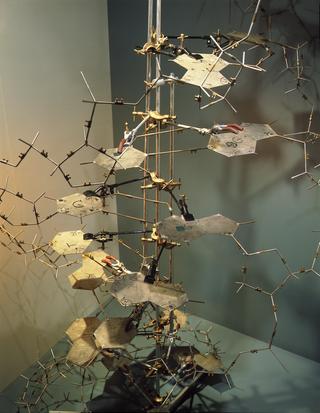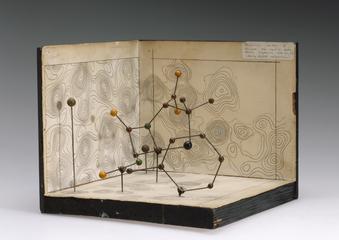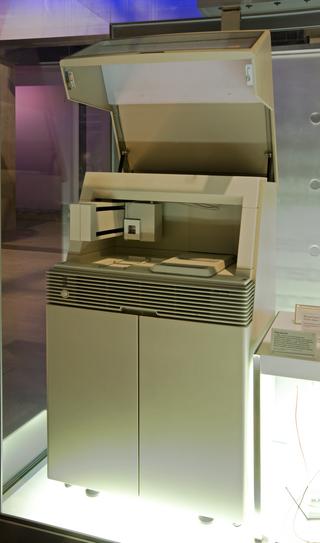Component part of Warburg manometer, associated with the Neurochemist Henry McIlwain (1912-1993), 1968
Component part of Warburg manometer, made by Hospital & Laboratory Supplies Ltd., associated with the Neurochemist Henry McIlwain (1912-1993) in metabolic studies on brain tissues, 1968.
More
This apparatus is known as a Warburg manometer, it combines flasks and a pressure gauge, and is used to determine changes in the amount of gas produced or absorbed by biochemical reactions in a test sample. Typically it is used to study cellular respiration and metabolism (the chemical processes occuring within a living organism). It is named after its inventor, the German biochemist Otto Heinrich Warburg (1883-1970), who pioneered this type of equipment in his research on cell respiration and tumor metabolism, work for which he won the Nobel Prize in Physiology or Medicine in 1931.
This apparatus appears to have been used by Neurochemist Henry McIlwain (1912-1993), who pioneered research into the metabolism of brain tissue when it was electrically stimulated. The manometer detected the amount of oxygen used by the sample, which increased as the chemical activity increased. It was clipped to the edge of a thermostatted bath so that the reaction vessels (see object 1981-370) dipped in the bath and could be maintained at body temperature.
The apparatus was donated by The Biochemical Society around 1981.
- Object Number:
- 1981-369/1





